Explore practical strategies to streamline your surroundings and improve focus by decluttering with ADHD.
Managing clutter can be a daunting task, especially for individuals with ADHD. However, with the right strategies and tools, decluttering can become a manageable and even enjoyable task.
This article will delve into practical and effective decluttering strategies tailored specifically for those with ADHD. From setting up simple, sustainable organizing systems to utilizing ADHD-friendly tools, you’ll find comprehensive guidance to transform your space into a clutter-free, organized haven.
Stick around to discover how to make decluttering a less overwhelming and more productive process.
Understanding ADHD

ADHD, or Attention Deficit Hyperactivity Disorder, is a neurodevelopmental condition marked by persistent patterns of inattentiveness, impulsivity, and hyperactivity.
Often, individuals living with this condition struggle with executive functions—those mental skills that help in planning, focusing attention, remembering instructions, and juggling multiple tasks.
This deficit in managing day-to-day tasks often makes decluttering and organizing a significant challenge.
Recognizing these characteristics provides a foundation for tailored strategies to bring about effective organization and cleanliness in a living space.
ADHD and Clutter

With ADHD comes a unique set of challenges including chronic disorganization, distractions, and difficulty maintaining focus – all factors that contribute significantly to the issue of clutter.
The constant stimulation and interruptions from the outside world can disrupt an individual’s ability to sort through items and make consistent decisions about what to keep and what to discard.
Moreover, the ADHD brain tends to be stimulated by novelty, causing an affinity for acquiring new things, leading to accumulation.
This struggle is further exacerbated when the concept of time is considered.
For those with ADHD, the perception of time can often be skewed, making tasks such as decluttering feel more daunting and lengthy, hence it is frequently put off or abandoned midway.
Understanding these intricacies allows us to hone decluttering strategies and adapt them to the specific needs of individuals with ADHD.
Impact of a Cluttered Environment On ADHD
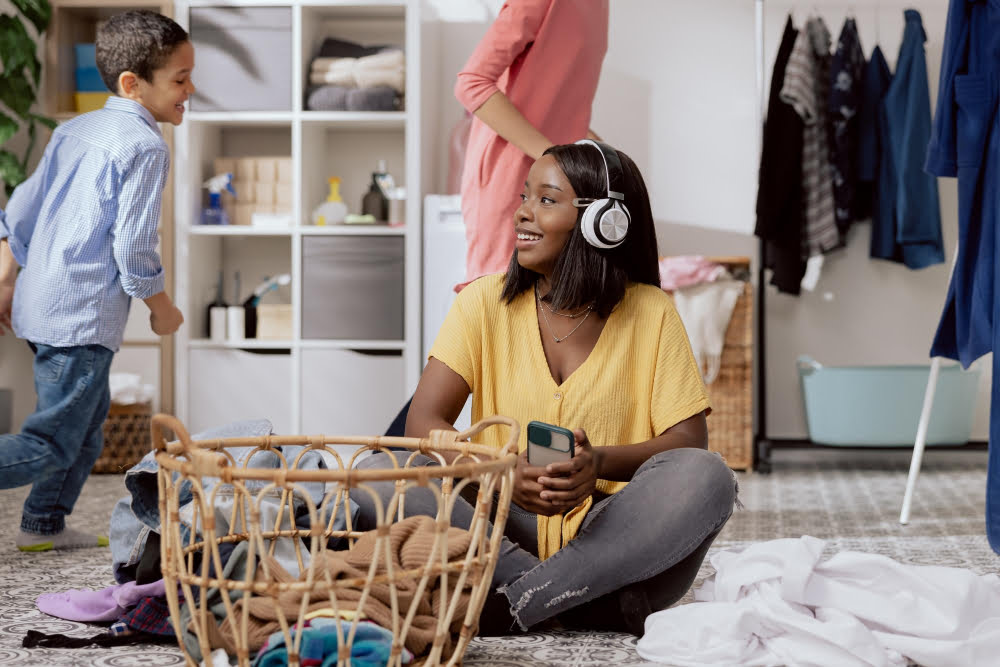
A disordered environment can exacerbate symptoms of ADHD, including difficulties with concentration, misplaced items, missed appointments, and general frustration. Numerous studies have linked external chaos to decreased productivity and increased stress levels.
For people living with ADHD, an environment brimming with distractions can heighten feelings of overwhelm and agitation. Unnecessary objects can compete for attention, causing frequent diversion from tasks at hand.
Further, time management becomes challenging with clutter due to lost items or frequent interruptions, hindering the overall productivity and efficiency. Understanding this correlation offers a foundation for the need to create and maintain a clutter-free space.
Understanding the Burden of ADHD Clutter
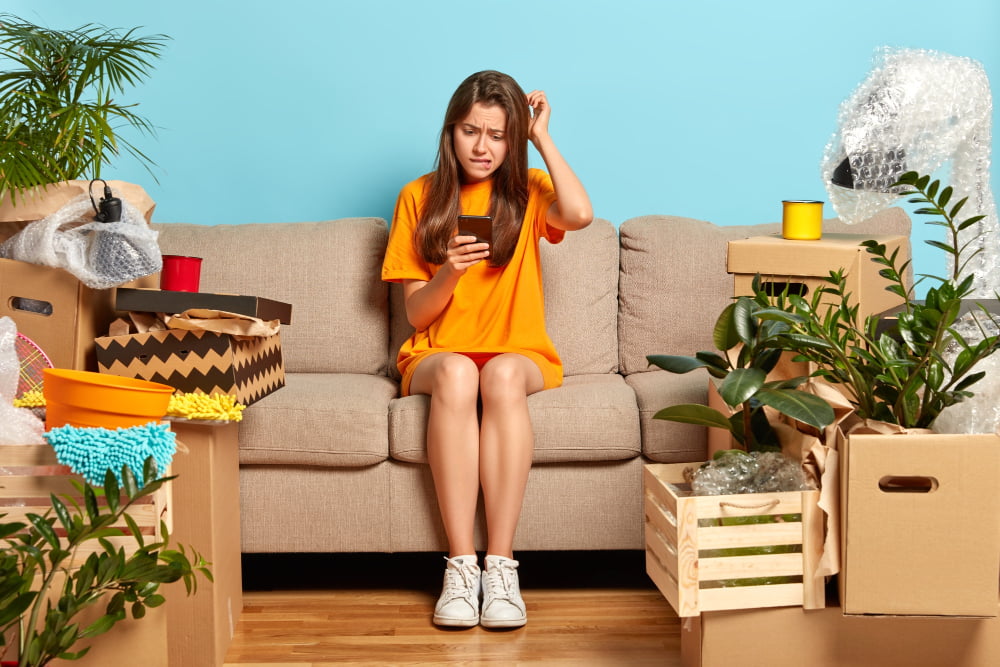
Individuals with ADHD often struggle with forgetfulness, impulsivity, and distractibility, making decluttering a particularly challenging task.
However, the clutter prompts a reverse effect too, exacerbating ADHD symptoms, and developing a vicious cycle of clutter and difficulty focusing.
Tasks feel more challenging in a cluttered space – papers pile up, bills disappear, and misplaced keys become a constant vexation.
The resultant frustration, anxiety, stress, and embarrassment of not finding things easily can hamper personal satisfaction and productivity.
Awareness of this burden is crucial for initiating sustainable decluttering strategies.
By unraveling the clutter-ADHD conundrum, one can lay the groundwork for lasting change towards a more organized, productive living.
How ADHD Affects Your Ability to Declutter

Individuals with ADHD often struggle with focus, impulse control, and decision-making, exacerbating the task of decluttering. These behavioral tendencies might manifest in clutter accumulation due to difficulty in categorizing and sorting items.
This also stems from a fear of losing important items or forgetting tasks if an item is out of sight. Additionally, the often overwhelming nature of a clutter puzzle can lead to inaction.
The entanglement of ADHD symptoms with organizing hurdles not only amplifies clutter issues but also compounds feelings of frustration and anxiety.
However, understanding these linkages is a critical first step towards developing ADHD-friendly decluttering strategies.
Starting Your Decluttering Journey
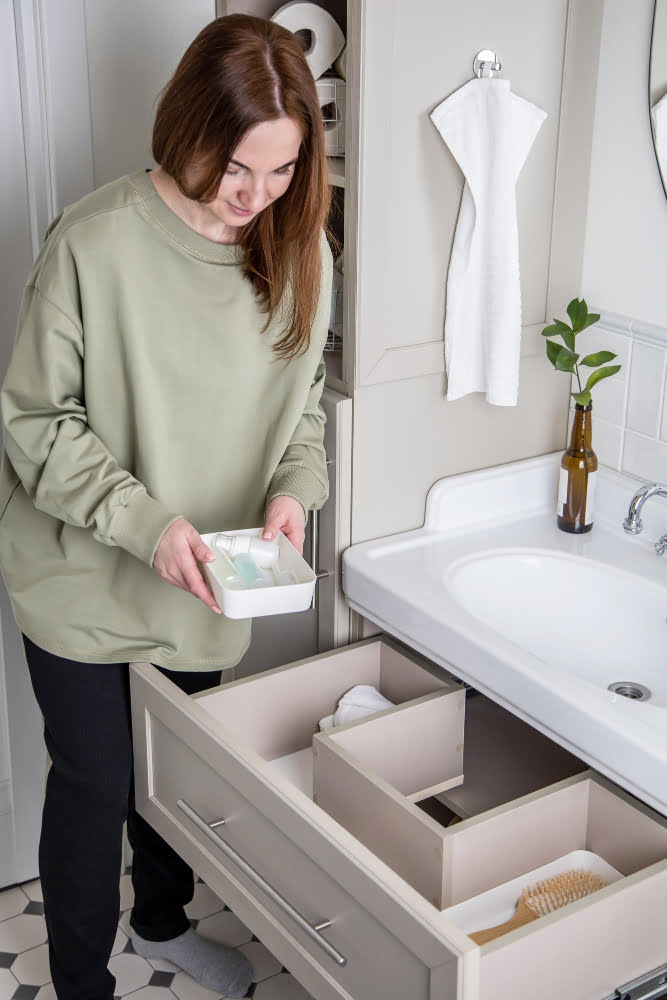
Begin by setting realistic, manageable goals, such as tackling one room or area at a time. Optimally, start with the least cluttered area to feel a sense of accomplishment sooner.
Always keep a trash bag handy for immediate disposal of unnecessary items. Create a critical distinction between items you “need“, ones you simply “want,” and those with no purpose in your life.
Try decluttering in short bursts of 15-30 minutes to make the task more manageable and maintain focus. Remember, the objective is progress, not perfection.
Gradual, consistent steps can lead to remarkable transformations over time. Lastly, celebrate minor victories to motivate yourself for the upcoming tasks.
How to Declutter With ADHD: Essential Tips

Start small by tackling one area at a time to avoid becoming overwhelmed. Consider decluttering in short, focused spurts instead of extended periods. To manage attention, set a timer for 15-minute tasks that you can incrementally build upon.
Utilize visual cues as reminders. ADHD brains are stimulated by immediate, tangible feedback, so a color-coded system or clear, labeled boxes can help.
Incorporating the OHIO rule (Only Handle It Once) can promote decisive action. If you touch an item, either dispose of it, donate it, or find it a proper home.
Imbue your organization procedure with fun. Listening to upbeat music or turning decluttering into a timed game can make the experience enjoyable and less taxing.
Strive for simplicity. The less complex your organization system, the easier it will be to maintain it.
Invoke the 80/20 principle: We typically use only 20% of our things 80% of the time. If you haven’t used something in a year, it’s probably a candidate for disposal or donation.
Lastly, practicing self-compassion is crucial. Not every day is a good decluttering day, and that’s okay. Focus on progress rather than perfection.
Strategies for Decluttering

Utilize the “one item at a time” rule. This encourages focusing on one object, deciding whether to keep, donate, or discard it before moving on to the next. This strategy reduces the chance of becoming overwhelmed.
Implement the four-box method – keep, trash, donate, and relocate. This tactic keeps the decluttering process simple and structured.
Don’t forget the “30-day rule”. If an item hasn’t been used or needed within the past month, it is possibly clutter. This method induces rational decisions about what truly deserves space in your home.
Lastly, remember the power of fifteen. Tell yourself to declutter for just fifteen minutes every day. This will make the task seem less daunting, making it a part of your daily routine. With these strategies, managing clutter becomes a feasible task.
The 80/20 Rule in Decluttering

The 80/20 rule, also known as the Pareto principle, is a productivity guideline that reveals only 20% of our possessions are used 80% of the time.
Applying this rule, take a look at your belongings and identify that crucial 20%. Those are your essentials—the items that should take priority in your organizing scheme.
The remaining 80% typically constitute clutter and should be considered for elimination. Whether it’s clothes you rarely wear, tools you seldom use, or books you’ve read once and won’t revisit, rationalize their necessity.
Recognizing this distribution will allow you to make informed and critical decisions about what to keep and what to part with. A tip here, be unemotional and objective in your assessment.
Maintaining a focus on your most utilized items will streamline your decluttering process, simplifying your environment, and consequently, your life.
Making Decisions About Items
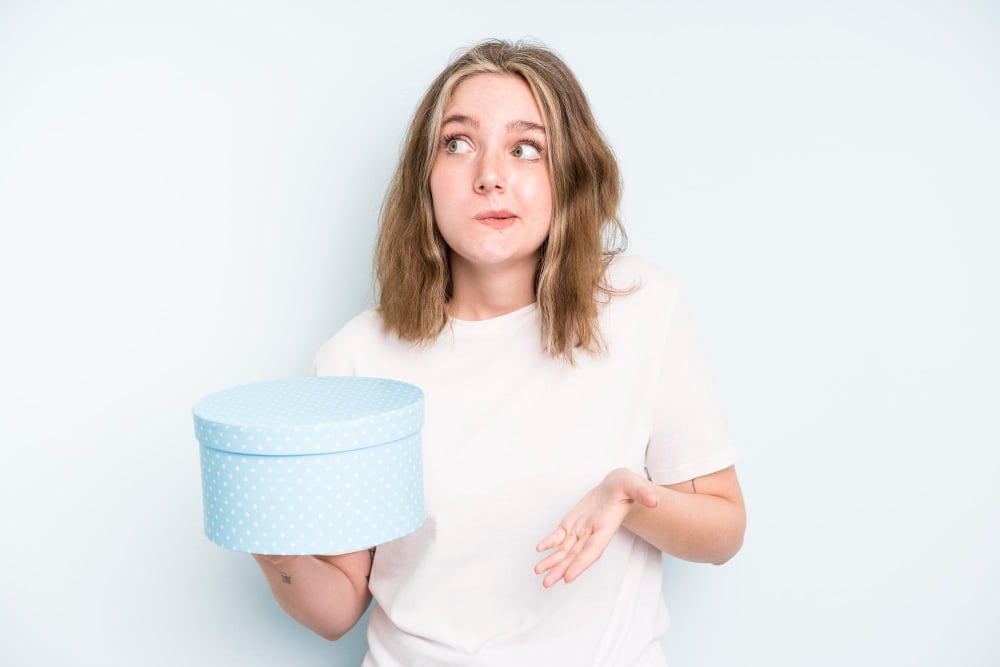
Approaching each item individually is crucial for an effective decluttering process. Beginning with a straightforward question – “Do I need this?” can be a game-changer.
If the answer is ‘no’, discard it. If it’s ‘yes’, consider how frequently you use it. Items used daily should be kept in accessible locations. Things used infrequently but necessary can be stored in out-of-the-way places.
Keep emotions out of this equation as much as possible. Dispose of broken items, donate unwanted or unused items in good condition. For difficult decisions, a maybe box can be used. Revisit it after a month, you may find decisions easier.
Remember, the goal is a clear, functional space that serves you, not your items. Stick to these principles while deciding on items to ensure a smooth decluttering process.
Recognizing Common Clutter Items in ADHD Homes
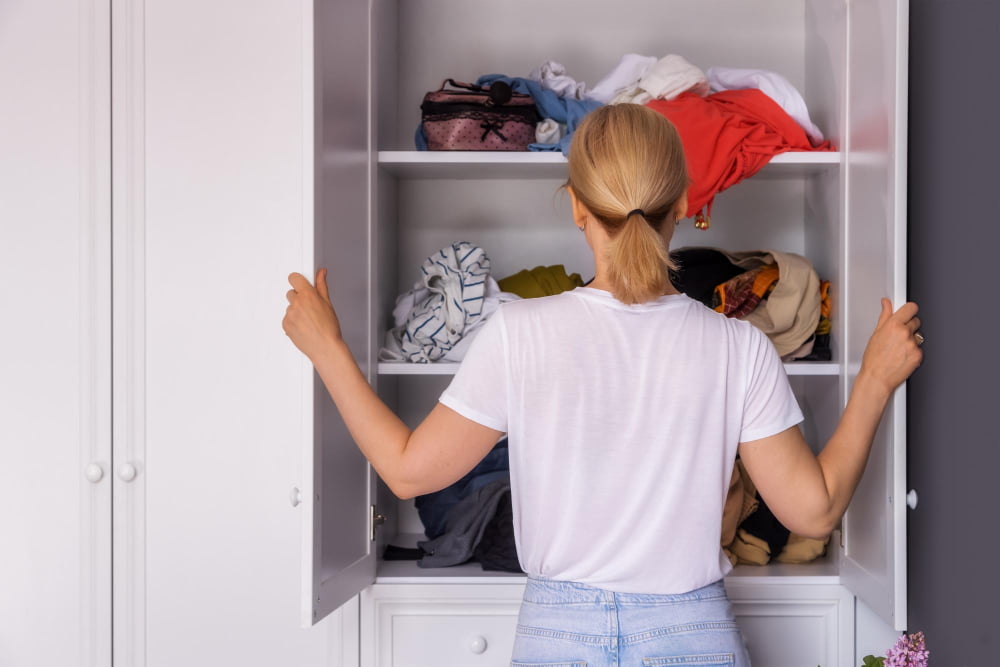
For individuals with ADHD, certain items tend to accumulate more than others due to a heightened interest in varied hobbies, struggles with decision-making, or an inclination towards sentimental attachments.
In most cases, paperwork is the number one offender. Bills, letters, and documents stacked in a disheveled manner easily create a cluttered space.
Another common item is clothing. This can range from heaps of laundry needing attention to an overloaded wardrobe.
Miscellaneous items found at the bottom of junk drawers or scattered around, like pens, keys, and knickknacks, are also among the typical culprits causing disorganization. Identifying these usual suspects is the first step towards reclaiming control.
Creating An ADHD-friendly Organization System
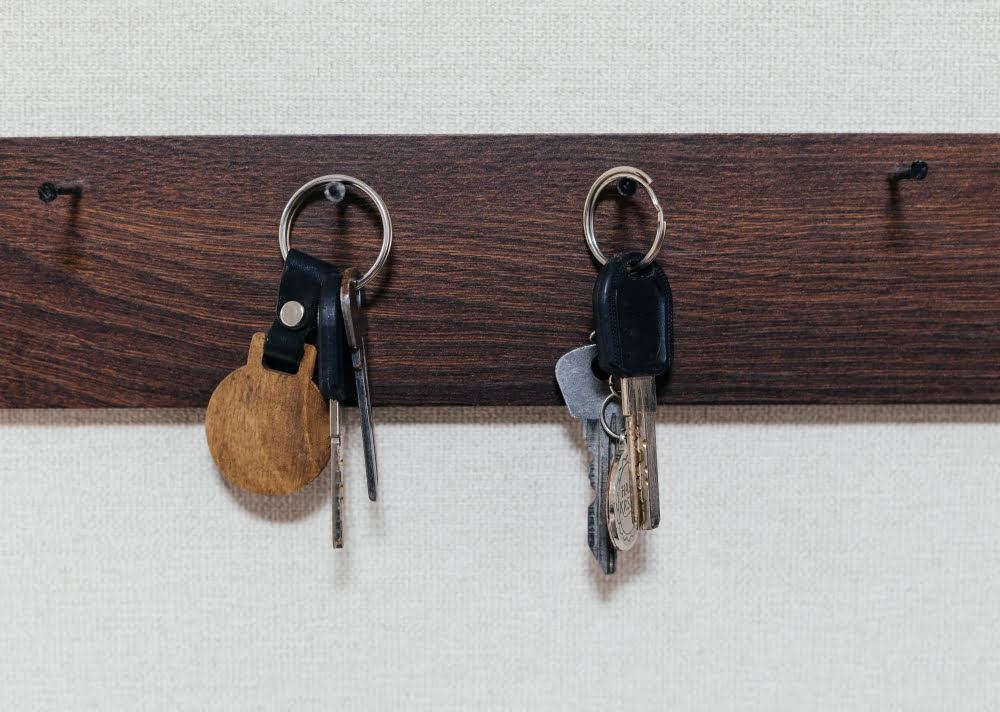
To create an ADHD-friendly organization system, it is critical to embrace simplicity and visibility. Start with establishing a ‘home’ for every item. This process should consider the natural tendencies of the person with ADHD; for instance, if they tend to drop keys on the nearest surface upon entering a room, place a designated key catch bowl there.
Next, consider utilizing open shelving or transparent storage bins. Cabinets and drawers can sometimes become “out of sight, out of mind” spaces. In contrast, visible storage can serve as a regular reminder to keep these spaces tidy.
Color-coding is another tool that can prove invaluable. People with ADHD often respond positively to clear visual cues. Assigning different colors to various categories of items can help keep them organized and easier to find.
Lastly, large and complex tasks can seem overwhelming, leading to procrastination. To address this, break the organizing process down into manageable chunks that can be tackled one at a time. Remember, small victories often lead to large successes in the realm of decluttering and organization.
ADHD-Centric Organization System
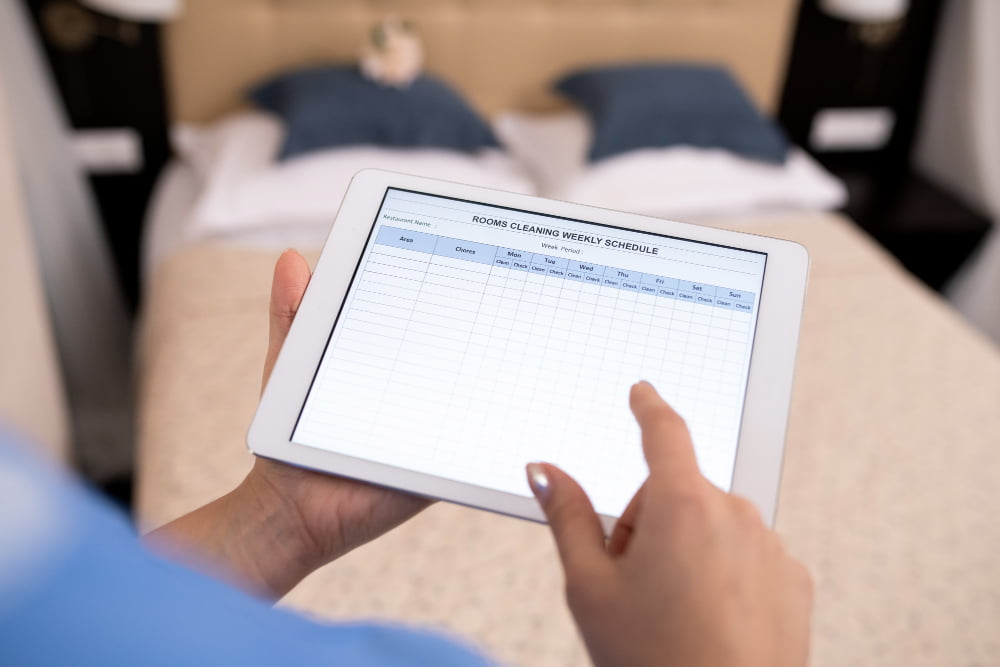
To make the organization process more ADHD-friendly, consider systems that lean heavily on visual cues and easy access. For instance, open shelving units allow quick scan and retrieval of items, cutting out the time required to open drawers or boxes. Opt for clear storage bins to easily view what’s inside.
Hanging items on hooks, whether they’re keys, cooking utensils, or gardening tools, can also prevent the out-of-sight, out-of-mind issue.
Labeling is another pillar in optimizing spaces for ADHD. Labeled containers, shelves, and drawers can aid memory and facilitate easy return of items to their designated spaces. Consistency in the placement of objects is key, as repeated actions build habits and decrease the cognitive load.
Additionally, consider technology-based solutions such as organizers and reminder apps. These systems can provide alerts for housekeeping tasks, general assignment due dates, or disposal of perishable items, all of which contribute to maintaining decluttered spaces.
ADHD-Friendly Storage Solutions
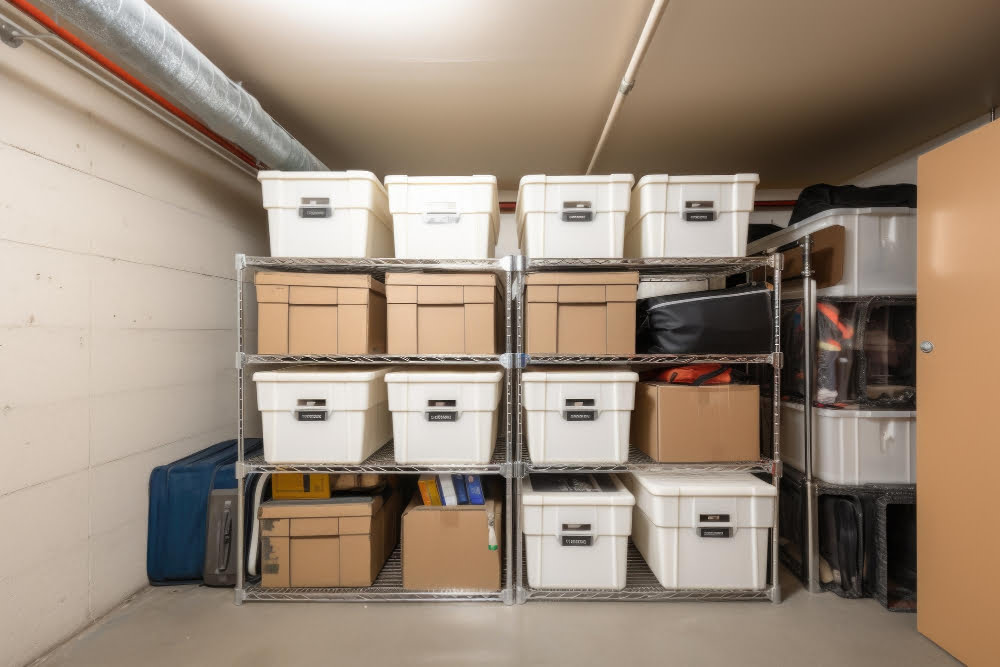
Invest in clear storage bins, allowing you to see what’s inside without opening, saving focus and energy. Label these bins descriptively for easier access to items later.
Opt for drawers instead of piles; not only will everything have its place, but this method also reduces the chance of losing things.
Incorporate a color-coding system, associating different types of items with specific colors. Make good use of vertical space with wall-mounted shelves or pegboards.
Create designated spots for frequently used items and ensure they are returned to these spots after use. This structured approach promotes a clutter-free environment, managing ADHD symptoms more effectively.
Beneficial Organizing Products for ADHD Brains
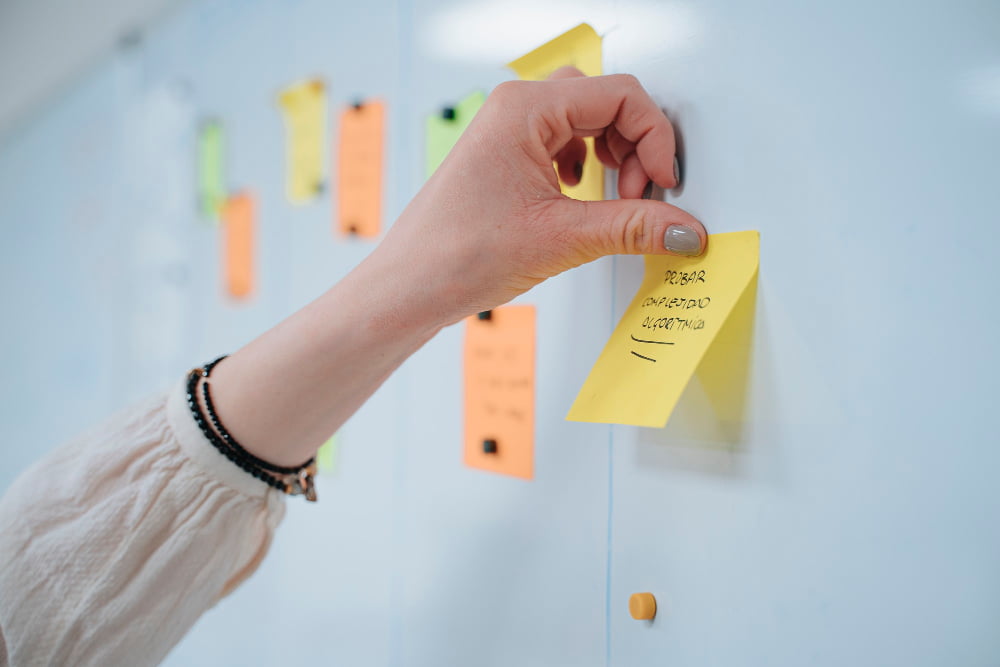
Invest in products designed to make organization a breeze. Clear storage bins allow easy visual access to stored items, reducing the likelihood of forgetting what’s inside. Colored coding systems, such as sticky notes or pens, can assist in prioritizing tasks and categorizing belongings, appealing to the visual nature of many ADHD brains.
Consider wall-mounted whiteboards or corkboards for easily accessible visual reminders about tasks and appointments. Smartphone apps, like task managers and digital calendars, may also prove valuable for staying organized on-the-go. These tactile and visual tools can significantly streamline the process, making it more manageable and less overwhelming.
Establishing Decluttering Routines

Regular routines can serve as a solid backbone to any decluttering endeavor. Particularly for people with ADHD, consistency is key.
Start by identifying the parts of your home that accumulate clutter most frequently- this could be a desk, wardrobe, kitchen counter, or bookshelf.
Once these hotspots are identified, schedule brief, daily decluttering sessions.
Consistently investing just 15-20 minutes a day can lead to significant results.
Make it as straightforward as possible by choosing the same time daily, such as right after breakfast.
If clutter is too overwhelming, break it down into even smaller tasks.
One day it could be clearing out a drawer, the next day sorting through a pile of papers.
This routine should not be overly ambitious.
If daily decluttering is too daunting, start with bi-weekly sessions.
The main objective is to introduce a sense of regularity without overwhelming yourself.
Routines, while they might seem monotonous, offer predictability, making the process of decluttering manageable and less anxiety-inducing over time.
With these in place, decluttering will gradually transform from a sporadic activity into a habit integrated into your daily life.
Utilizing Visual Reminders
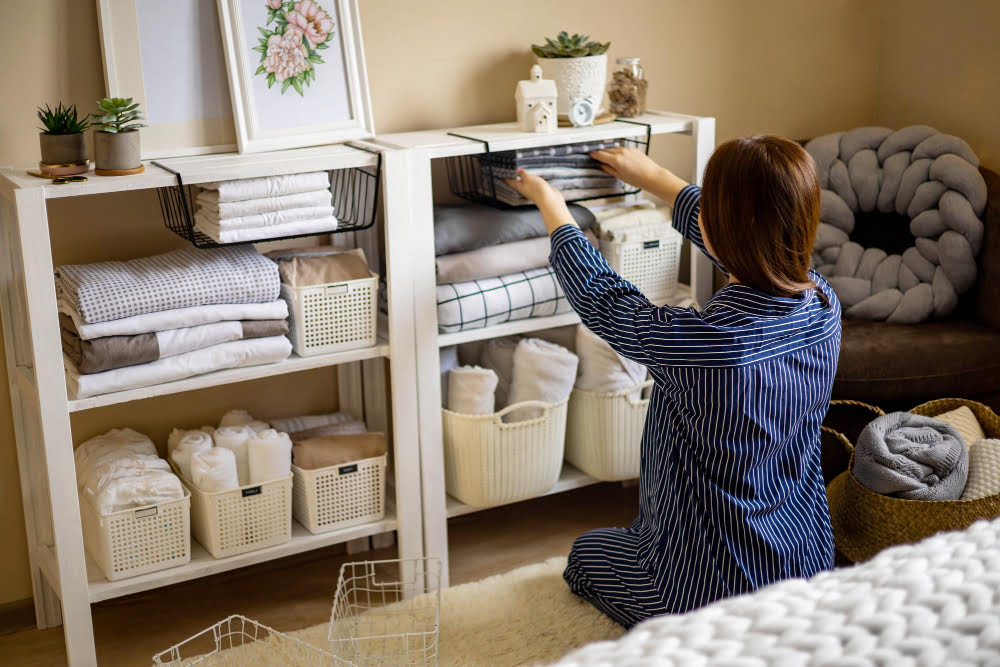
When it comes to remembering where items belong, visual cues can be powerful tools for an ADHD brain. Instead of hiding things away in drawers or bins, consider clear or open storage solutions where items remain visible.
Color-code storage areas if it fits your aesthetic – distinct, bold color can help trigger memory. Furthermore, large, easily readable labels can be of great assistance.
Don’t limit yourself to just naming the contents — add a photo or sketch of the items stored. The combination of words and images can be more efficient in jogging your memory for where items should be returned after use.
Emphasizing Labels in Organization
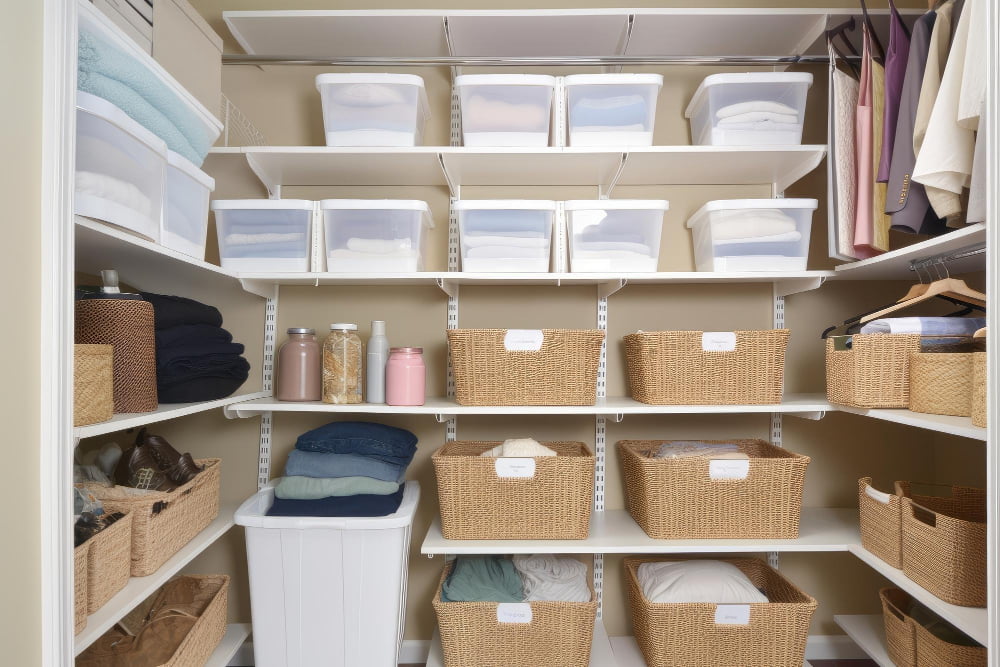
When organizing, focus on creating and using clear, concise labels. These labels guide the organization process and keep everything in its designated place, thereby cutting down on misplaced items.
Make labels visually distinctive and easily visible, using visual cues wherever possible to aid comprehension. Keep in mind that color-coding can be an effective tool here, with different colors for different types of items.
Moreover, ensure consistency throughout your home or work space to make your labeled organization system a success. With practice and time, you can form a habit and turn this practice into second nature.
Incorporating Minimalism
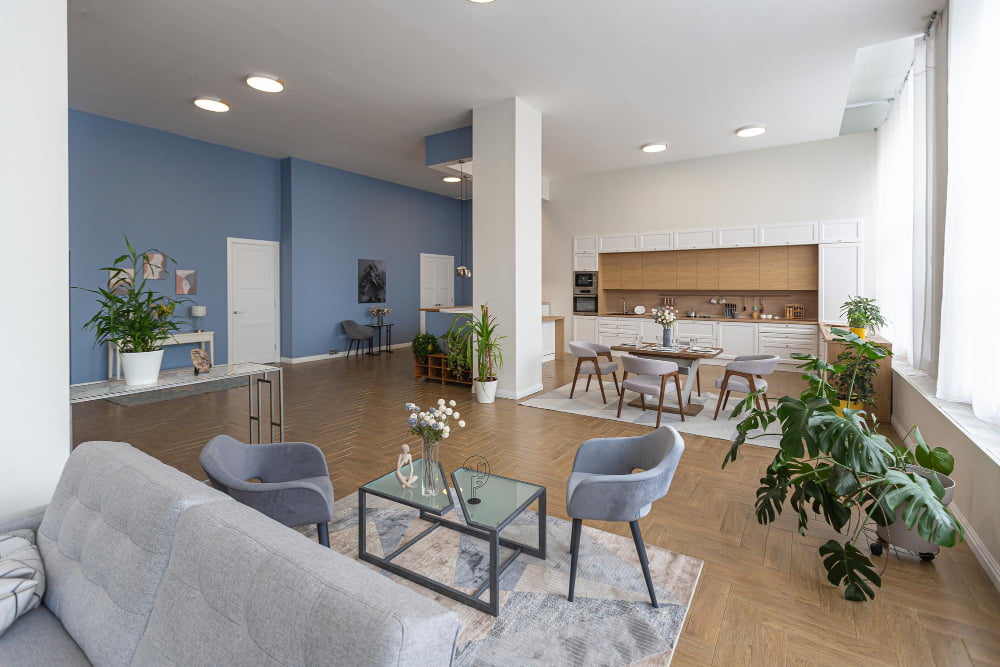
Embracing minimalism can be highly beneficial for individuals with ADHD.
By minimizing the number of items in your space, you simultaneously reduce the potential sources of distraction, making it easier to maintain focus.
Begin by identifying what truly brings value to your life and let go of the rest.
Consider adopting the ‘one in, one out’ rule to maintain balance – if you purchase something new, something old should exit.
Frequent decluttering exercises can facilitate this, helping maintain a minimalistic yet functional living and working environment.
This way, it becomes easier to organize, find things, and also reduces cleaning time, ultimately leading to more peace and less chaos.
Remember, minimalism is not about deprivation, but about cherishing and making space for what truly matters.
Handling Paperwork and Documents
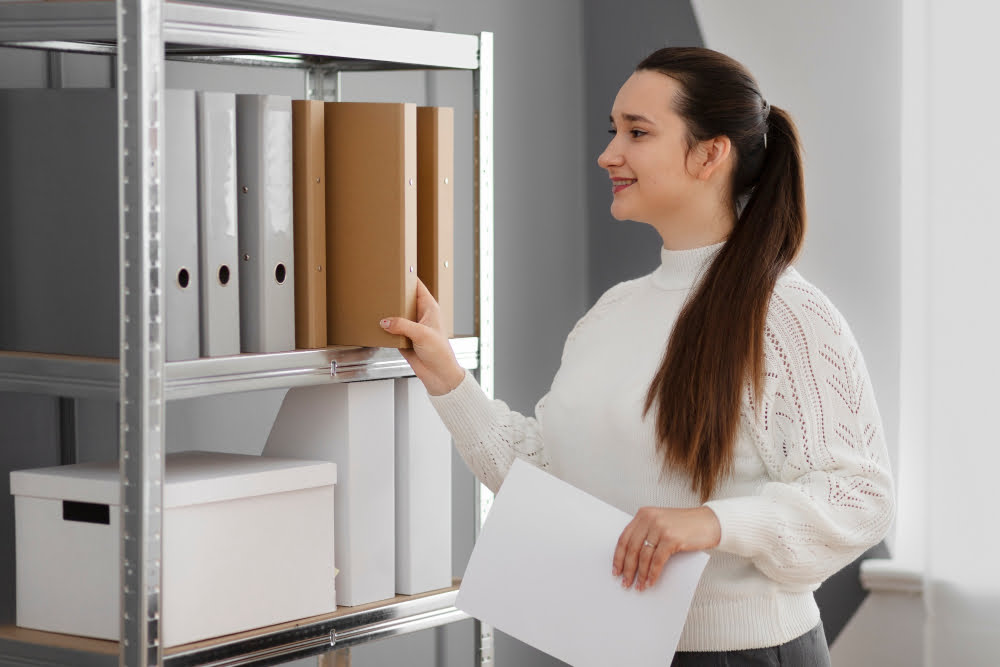
Since paper clutter often accumulates in homes of those with ADHD, streamlining this aspect can make a significant difference.
Begin by categorizing documents into three groups: ‘action’, ‘file’, and ‘recycle’.
Documents that require immediate attention like bills, forms, and letters go into ‘action’, while important records such as bank statements, insurance policies, and tax papers fall into ‘file’.
Everything else qualifies for ‘recycle’.
Once sorted, handle ‘action’ documents immediately.
For those belonging to the ‘file’ category, create a coherent filing system.
Use a color-coding system for different types of documents, and opt for hanging files or binders for ease of access and addition.
Remember to set a regular time, weekly or monthly, to review and purge unnecessary documents, keeping this system efficient and up to date.
Managing Manuals and Catalogs

In today’s digital age, most product manuals and catalogs are readily available online.
Holding onto physical copies could be inadvertently contributing to overall clutter.
So, embark on digitizing essential documents.
Discard older physical manuals and catalogs, and as an alternative, bookmark respective websites or download digital versions.
Organize these digital files into clearly labeled folders on your computer or cloud storage for easy access and retrieval.
This lessens the struggle with physical clutter while keeping valuable information within reach.
Addressing Out-of-Date Electronics
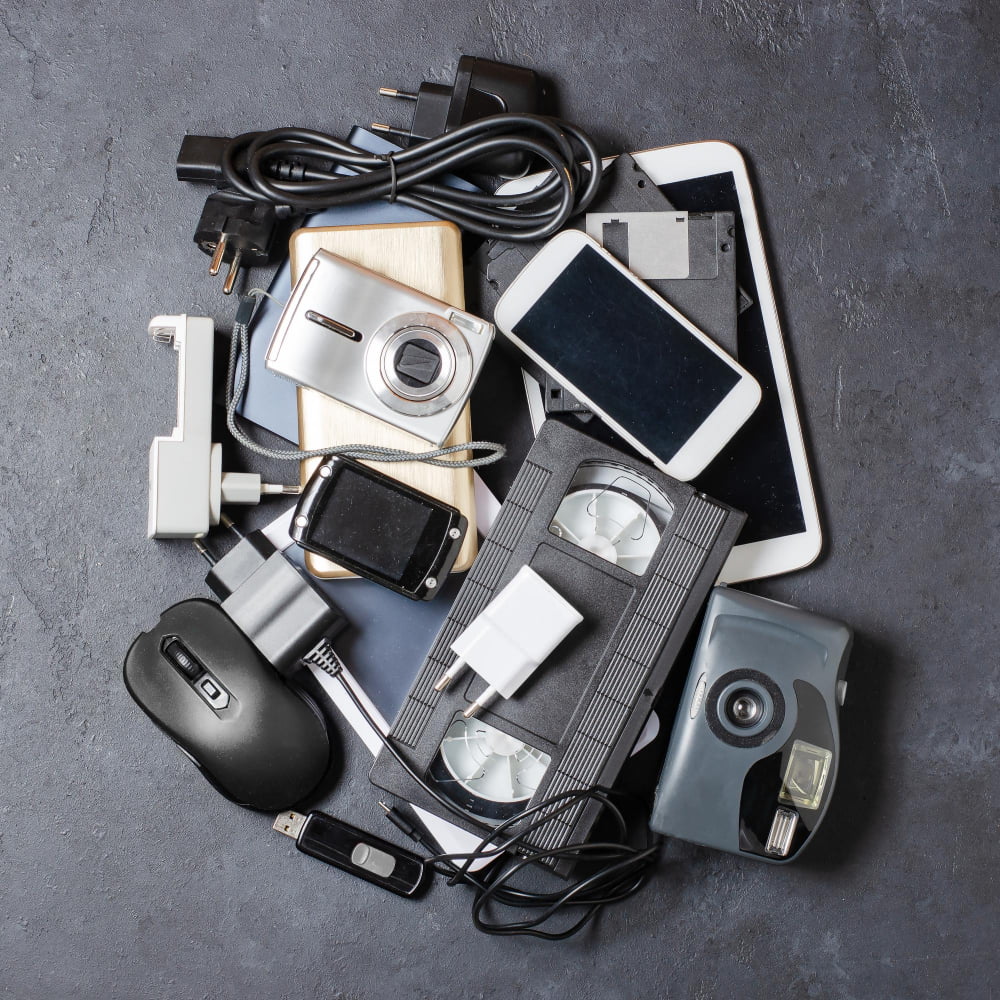
Electronics can pose a unique challenge in the decluttering process, often piling up due to emotional attachment or the fear of information loss.
The first step is to identify the devices used daily from those collecting dust.
Discard, donate, or recycle old gadgets bold enough to be called museum artifacts with zero substantial use in your daily life.
For the devices storing important data, either transfer the files to your frequently used device or opt for a cloud storage solution.
Wipe them clean of personal information before discarding or donating.
Electronic waste must be responsibly disposed of.
Use e-waste recycling programs available in your area.
By addressing the electronic clutter, you’ll free up substantial space, reduce dust accumulation, and diminish visual distractions.
How to Deal With Hobby-Related Clutter
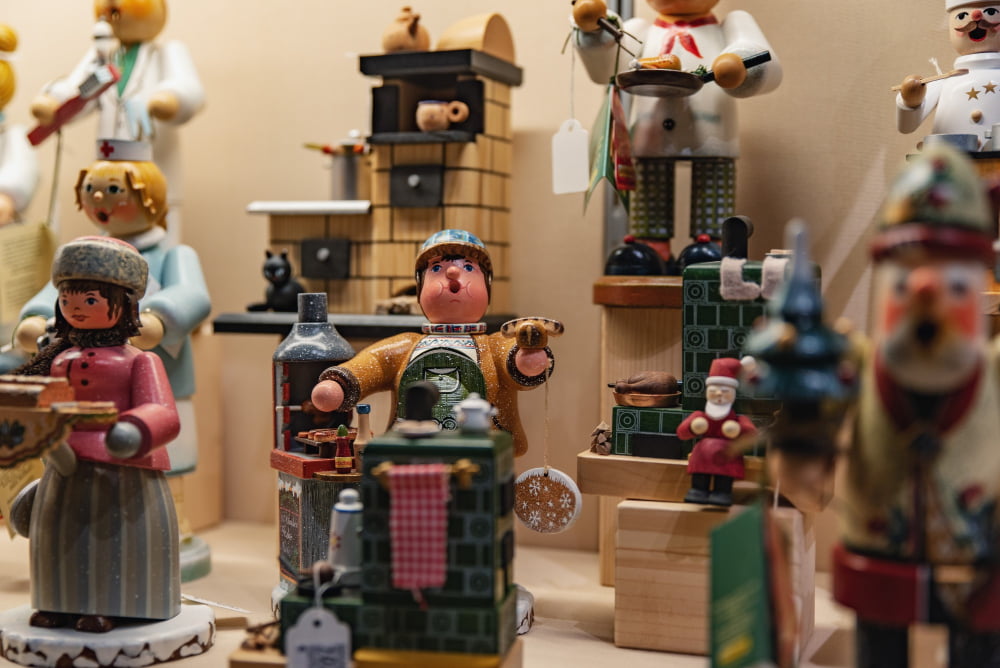
To handle hobby-related items, start by sorting out all materials and equipment. Separate current, active hobbies from ones you haven’t engaged with in the past six months.
For active hobbies, designate a storage location that is both accessible and proportionate to the use of your hobby items. Keep these items neatly stored away when not in use, yet easy to access when needed.
For less active or dormant hobbies, consider if it’s worth the space they occupy. If the hobby no longer brings joy or you keep items “just in case,” it might be time to donate or sell. Remember, space is a valuable asset in your home and should only be occupied by items that serve a purpose, including your enjoyment.
Overcoming Barriers to Decluttering

One of the key factors in effective decluttering is recognizing and confronting the challenges that arise. Fear of regret can often prevent you from discarding items you no longer need. Combat this by asking yourself how easily the item can be replaced, and remember it’s not about getting rid of everything, but rather making space for the essentials.
Time can also be a barrier. Instead of contemplating on organizing your entire home in a day, break down tasks into manageable chunks. Set timers for short, dedicated sessions of decluttering. This approach helps prevent becoming overwhelmed while encouraging progress.
With ADHD, an ‘out of sight, out of mind’ mentality often prevails, making storage decisions difficult. Transparent storage containers can be useful. Labeling these containers will ensure items are easy to find and return to their designated spots.
Last ly, utilize professional support when needed. ADHD coaches, professional organizers or therapists can provide invaluable guidance and structure to ensure your decluttering journey is a successful one. Ultimately, persistence is key. Mistakes are part of the process, but they’re not failures. They’re opportunities for growth and learning. Keep going.
How to Overcome ADHD-Related Cluttering Issues
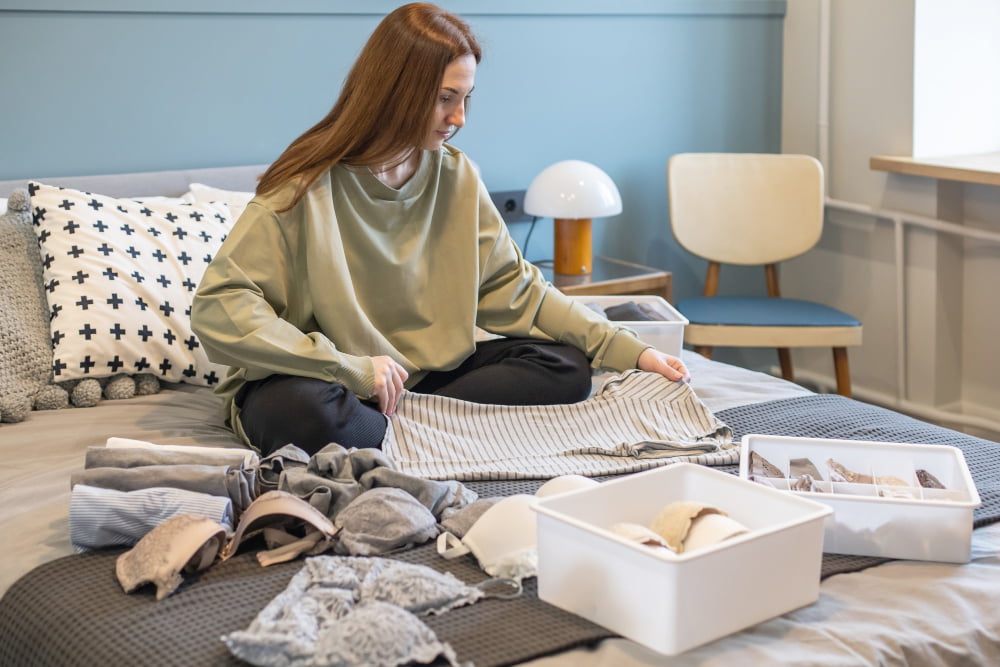
Firstly, recognize that impulsivity and difficulty with decision-making can lead to accumulation of unnecessary items. By acknowledging this, you empower yourself to develop new habits. Take it slowly, decluttering one small area at a time.
Choose one shelf, one drawer, or a corner of a room.
Next, encourage decision-making by asking key questions such as “Have I used this item in the past year?” or “Does this add value to my life?”. Arm yourself with separate bins for ‘keep’, ‘donate’, and ‘trash’. The key is not to move onto another area until the current one is decluttered completely.
Using timers can make the decluttering process less daunting. Set a timer for 10 minutes, and just focus on decluttering until the timer goes off. This helps break the task into manageable chunks.
Finally, don’t forget to involve professionals if the task feels overwhelming. It’s completely okay to seek help from professional organizers who specialize in ADHD. They provide guidance, support, and effective strategies tailored to your particular challenges.
Overcoming ADHD-related cluttering issues is certainly doable and within hand’s reach. Each step you take brings you closer to a less cluttered, more harmonious living space. Remember, progress, no matter how small, is still progress.
Maintaining a Clutter-free Space
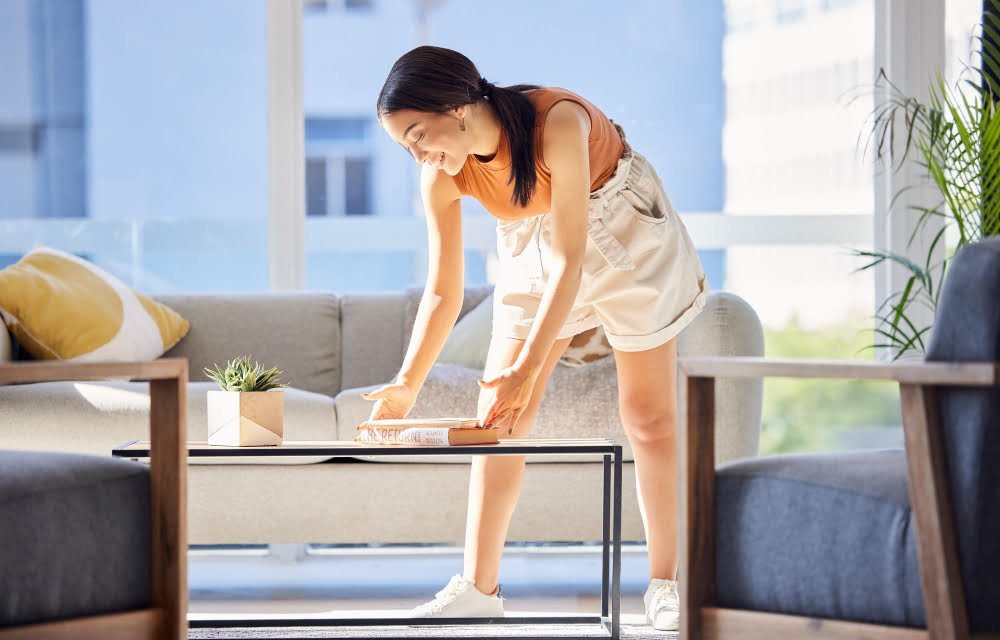
Developing a maintenance routine is crucial to ensure that your space remains organized and clutter-free. Allocate designated ‘deal with clutter’ times throughout the week. Aim to commit 5-10 minutes per day to tidying up, either at the beginning or end of the day, depending on your natural energy rhythms.
Do quick sweeps of each room, place items back where they belong, and avoid letting clutter accumulate. Remember, the goal is not perfection, but consistency.
On a monthly basis, do a more thorough review. Check if items are still in their designated spots or if new clutter hotspots have emerged. If you find items that have not been used in a while, consider disposing of them or giving them away.
It’s also beneficial to maintain a ‘one in, one out’ rule: for every new item you bring into your space, let go of another. This will help prevent the accumulation of new clutter in your home.
Maintaining a Clutter-Free Environment
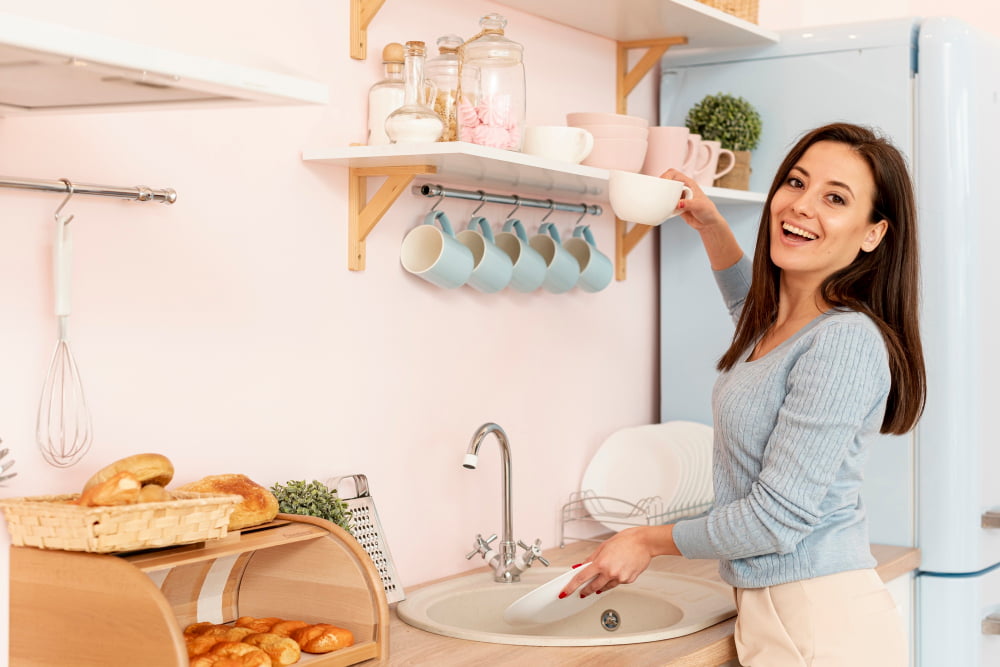
Consistency and regular practice are key to keeping your space organized. Dedicate a few minutes each day to return items to their designated places. This prevents clutter build-up and reduces the amount of time needed for larger decluttering tasks.
Adopt the ‘one in, one out’ rule to prevent surplus possessions. This means that for every new item that comes into your space, a similar item should go out. This policy aids in keeping clutter at bay.
Finally, instill a regular cleaning routine. A tidy space often promotes an organized mind, which is particularly beneficial for people with ADHD. Remember, maintaining a clutter-free environment is a continuous process, but with deliberate action, it can soon develop into a habit.
Emotional Aspects of Decluttering With ADHD

Individuals with ADHD frequently attach strong emotional value to their possessions, which can complicate the decluttering process. Emotional bonds may leave one feeling protective of belongings, even when they serve little to no practical use.
It’s essential to be gentle with oneself during this process. Acknowledging the emotional discomfort associated with removing items from your space is a crucial first step. Distinguishing between items of genuine sentimental value and those that are clutter will gradually become easier as you practice detachment.
The act of letting go can bring about feelings of relief and offer a newfound sense of freedom. As your physical space clears, you may also experience a decrease in anxiety levels, making daily tasks more manageable and reducing ADHD-related stress.
One effective technique to navigate this emotional journey is to take pictures of items you’re parting with, primarily if they hold sentimental value. This way, you’ll always have a memory to look back on, even when the physical item is no longer with you.
Furthermore, considering the joy an item can give someone else if donated can also ease feelings of guilt or loss. In the end, recognize that this process is a journey, and it’s okay to proceed at your own pace.
Understanding the Connection Between Hoarding and ADHD
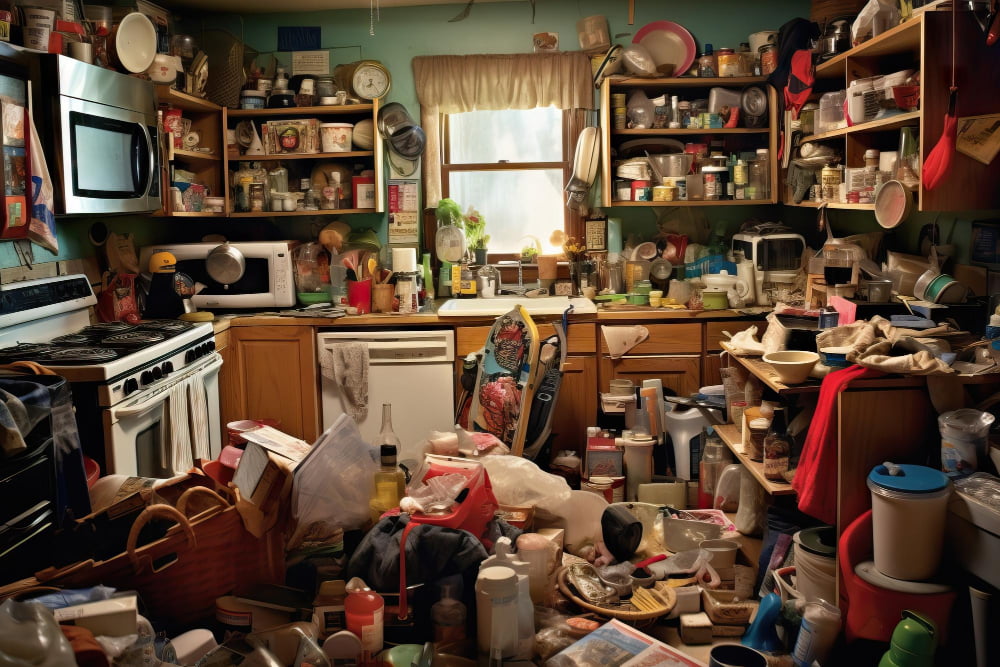
Individuals with ADHD are often prone to hoarding behaviors. This tendency can be attributed to difficulties with decision-making and impulse control, both common symptoms of ADHD.
Such inability to decide what’s important can lead items to pile up, evolving into hoarding over time. Moreover, sentimental attachment to items or fear of losing valuable information makes discarding items difficult, thus exacerbating the hoarding behavior.
Recognizing this connection elucidates the reasons behind excessive clutter and can help in devising effective decluttering strategies.
Self-Rewards As a Motivation in Decluttering

Unveiling a clean, clutter-free area can be rewarding in itself, but for additional motivation, small rewards can also be incorporated into your decluttering process. Consider setting specific milestones, like completely decluttering one room, and then rewarding yourself once you’ve achieved this goal.
Rewards can be as simple as a cozy movie night, a walk in the park, or indulgence in a favorite treat – just make sure it’s something you truly enjoy and look forward to. It is important to note that this reward system should encourage productivity and not lead to acquiring more unnecessary items. This strategy leverages the proven psychology of positive reinforcement, fostering consistency in maintaining a decluttered space.
Seeking Professional Help

If decluttering seems overwhelmingly difficult or is consistently brushed beneath other priorities, third-party expertise can prove invaluable.
Organizing professionals, especially those experienced with ADHD clients, can offer insightful perspectives, create workable systems, and provide emotional support.
They understand the unique obstacles tied to ADHD and offer solutions that work seamlessly with individual lifestyles.
Furthermore, mental health professionals can assist in addressing deeper rooted emotional attachments to objects.
But remember – it’s not about the speed; it’s about sustainable progress, no matter how small.
Seeking help is not a sign of defeat but rather an act of empowerment, helping you reclaim control over your surroundings.
Hope and Success Stories
By embracing effective decluttering routines and strategies, many individuals with ADHD have transformed their lives, finding newfound clarity and productivity in tidier spaces.
Julia, a college professor diagnosed with ADHD, managed to reclaim her home office space by following the 80/20 principle, focusing on decluttering the items that caused 80 percent of her clutter.
Now, she enjoys a pristine workspace and reports an increase in her productivity levels and a decrease in her stress levels.
Similarly, Thomas, a retired engineer with ADHD, used visual reminders and labels to keep his tools organized.
He realized over time that this system cut down his tendency to purchase duplicates of items he already owned.
It is these small victories that instill hope, showcasing that positive changes in organizing habits can yield substantial improvements in daily life.
Embracing these techniques can lead to similar victories in your own decluttering journey.
Remember, progress, not perfection, is the goal.
With every item you declutter, you are one step closer to a clearer space and mind.
Every decluttering success story begins with a single step: the decision to start.
FAQ
Do people with ADHD struggle with clutter?
Yes, individuals with ADHD often struggle with clutter as they tend to leave items out as visual reminders, which can often lead to a cluttered environment.
How do you control clutter with ADHD?
To control clutter with ADHD, employ strategies such as situating wastebaskets in all rooms, using magazine racks where you usually read, allotting at least 15 minutes daily for decluttering activities, and designating a specific junk drawer in each room.
Why is the ADHD brain prone to clutter?
The ADHD brain is primarily prone to clutter due to diminished working memory, insufficient impulse control, and the ease of obtaining items through immediate fulfillment services.
What strategies can someone with ADHD use to overcome chronic disorganization?
Strategies for someone with ADHD to overcome chronic disorganization include establishing simple routines, creating clear systems for staying organized, implementing reminders and alarms, utilizing tools like color-coding or labeling, breaking tasks down into smaller steps, minimising distractions, and leaning on external support such as a professional organizer or trusted friend.
How does clutter impact an individual with ADHD?
Clutter can exacerbate ADHD symptoms by overwhelming the senses, distracting focus, and making task management challenging due to the increased difficulty in finding and organizing items needed.
Can professional organizers help individuals with ADHD manage their clutter?
Yes, professional organizers can effectively assist individuals with ADHD in managing their clutter by employing structured systems and routines tailored to their specific needs.
Related Stories
- How Long Does It Take to Declutter a House?
- Decluttering for Seniors: A Practical Guide for a Safe and Comfortable Home
- Effective Steps on How to Declutter Toys: A Comprehensive Guide
- Top Strategies for a Decluttered Living Room: Guide and Tips
- Decluttering Strategies: Proven Techniques for Maintaining a Tidy Home